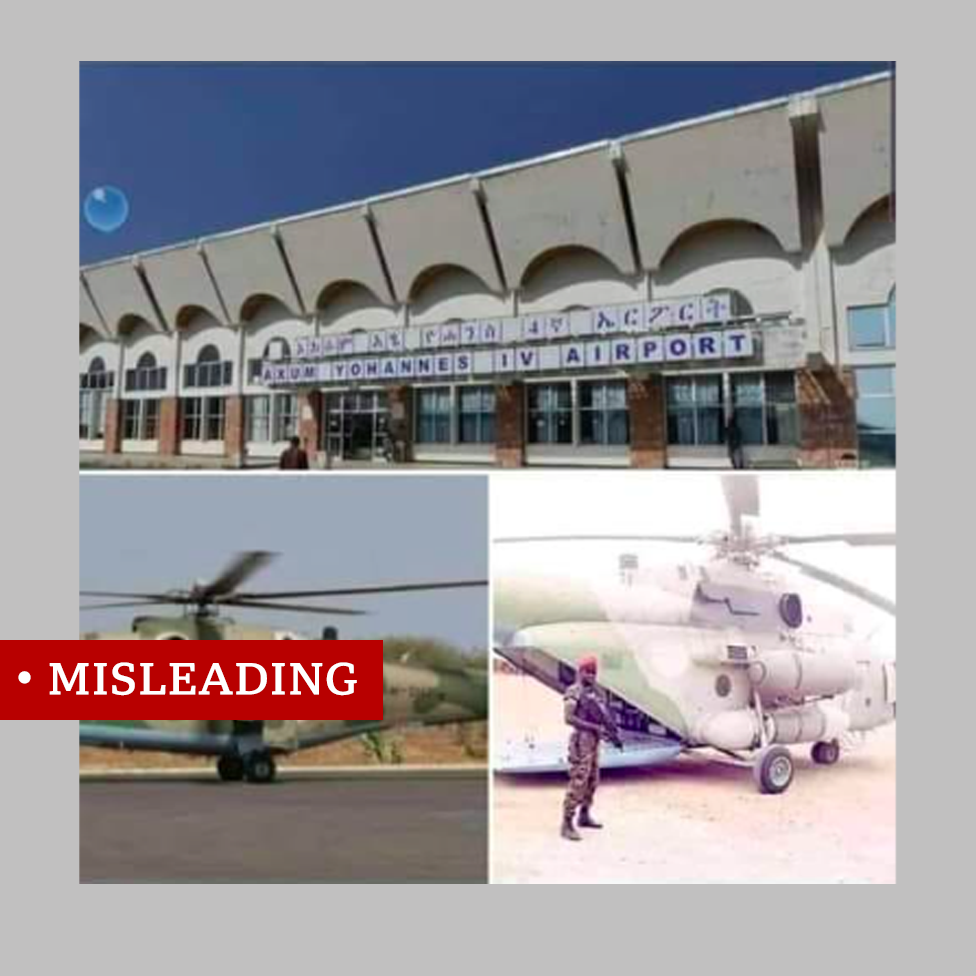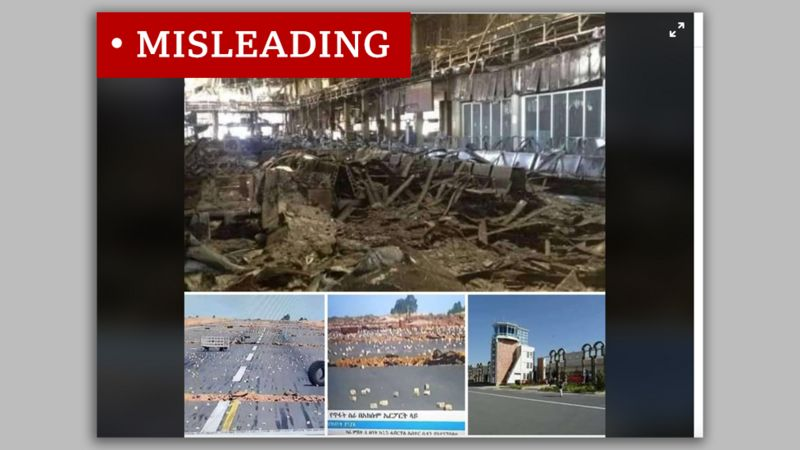
A strategically important airport in Ethiopia’s northern Tigray region has become a key battleground between opposing forces in the current conflict.
Pro-government accounts say the Ethiopian military controls Aksum airport – but this does not appear to have prevented Tigray special forces mounting an attack and disabling the runway in the past few days.
With communications from the region largely cut, the situation has been unclear.
But we’ve taken a look at some footage put out about the attack, and satellite images of the airport, to try to piece together a timeline of events.
The battle for Aksum airport
Ethiopian forces captured the airport on 11 November, according to pro-government social-media accounts.
Until that point, it had been in the hands of the Tigray regional forces (known as the TPLF).
But control of the airport and the surrounding region was clearly not settled on that date.
On Thursday, 19 November, the Tigray leader, Debretsion Gebremichael, told the Reuters news agency Aksum town was still in their hands – but it is unclear if that included the airport.
“Aksum is with us – but there is an army sent to control Aksum – but there is a fight,” Mr Debretsion said.

On Friday, 20 November, the government announced it had captured Aksum town, but the TPLF had damaged infrastructure in the area.
And on Sunday, 22 November, state media published a video and images of bricks and rubble on the runway, as well as what appeared to be trenches dug into the surface, saying the TPLF had attacked “ploughed and destroyed the airport, which has contributed a lot to the economy and the people of Aksum”.

To determine whether these images are genuine, we’ve looked at satellite imagery, provided by Planet Labs, from before and after the attack.

On Thursday, 19 November, the runway appeared to be free from rubble or damage.
But the image captured on Monday, 23 November, shows lines across the airport, which corroborate the previous day’s state media reports that trenches had been dug across the runway to prevent planes landing.

Other investigations have led to similar findings.
Those transversal scars (trenches) made at almost regular intervals on #Axum Airport runway are made to prevent aircrafts to land. Those can (hardly) be seen from space as brownish thin lines on this @sentinel_hub imagery from yesterday (22.11.20). #Ethiopia #Tigray #IMINT https://t.co/d3m0KoGWxk pic.twitter.com/8RX7fjUzXU
— Observer IL (@Obs_IL) November 23, 2020The Tigray government is yet to comment on what happened at the airport.
Mr Debretsion has denied the TPLF destroyed the airport, but confirmed that obstacles had been put in place to stop the Ethiopian army from advancing.
Misleading images amid an information blackout
With the internet and most mobile communications down in the Tigray region, getting an accurate picture of events is challenging.
Ethiopia’s state-controlled media has near-monopoly access to the territory and social media has been littered with misleading images.
After it was reported the Ethiopian army had gained control of the airport, pro-government accounts shared images from old stories unrelated to the conflict, purporting to show Ethiopian military personnel at the airport.

Similarly, after Ethiopian media reported the TPLF had damaged the airport, social-media users began sharing images of the near-total destruction of a terminal building.

But the image being shared was in fact from an attack at a Libyan airport in 2014.
Human Rights Watch has called for the Ethiopian government to restore communications in the region.
Why Aksum airport is important
Ethiopia is a vast country and keeping airports operating for supplies and personnel is important for the national military.
The Aksum region is also important for historical reasons.
Balsillie School of International Affairs director Prof Ann Fitz-Gerald said: “It’s hugely important because other northern airports at Bahir Dar and Gondar have also been damaged and airport security is crucial for mobilising troops and keeping physical lines of communication open.”
“If regional security forces were not going to have the airport itself, its tactic would be to disrupt the access to the airport.
“It would’ve been a last ditch tactic and possibly as they became threatened.”
